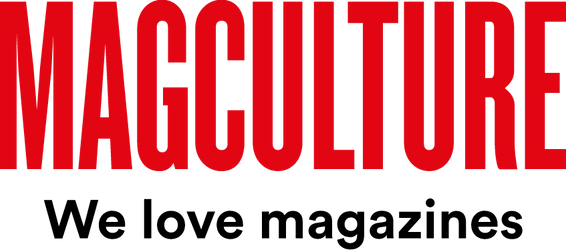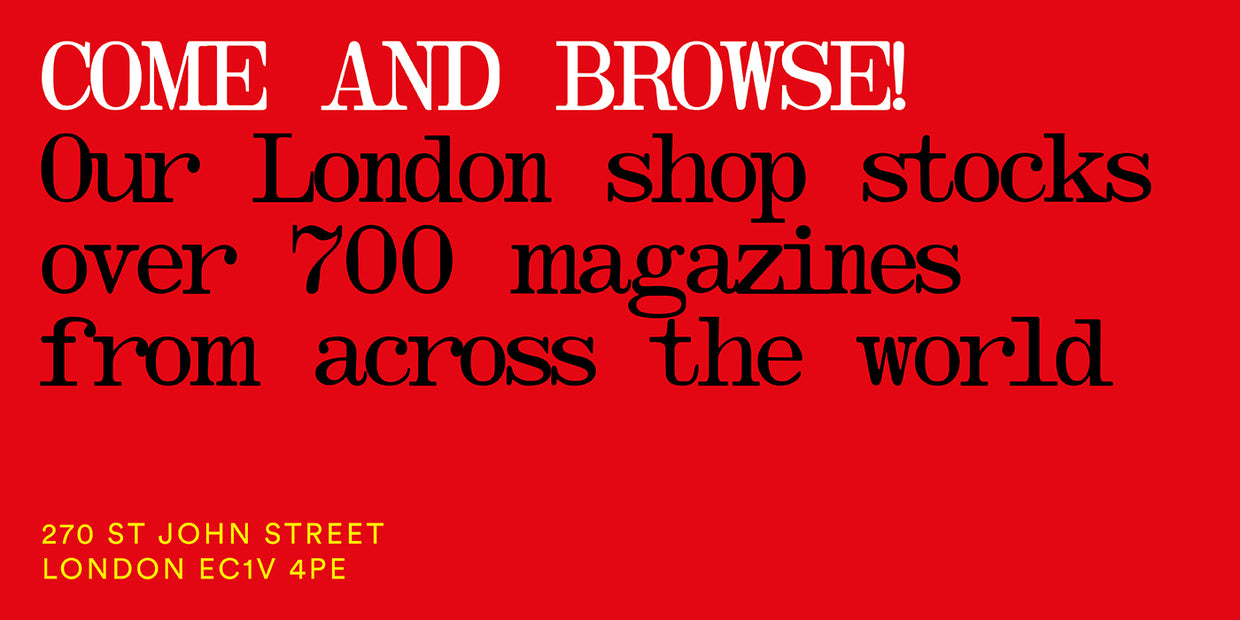
Elias Myer, Scary Boots
This week we meet the person behind Scary Boots, a beautiful, limited edition risograph-printed zine that has been flying off our shelves at the shop.
The zine is a treat in every sense; it looks great and has charming stories. It’s maker, Elias Myer, prefers anonymity, we know little about him, but he opened up on the publication for us as issue two goes on sale.
What are you doing this morning?
I have to start my day with two cups of tea in quick succession. Then I’ll lie on this spiked mat for as long as I can bear. Usually about five minutes. I’m not sure how it works; it’s basically a bed of nails. But it helps me feel less antsy.
I’ll usually watch some trash TV while I drink my two cups of tea. OG Jersey Shore is my favourite. I have a well considered argument for Jersey Shore being a legitimate work of art, but really I think I’m just drawn to filth and debauchery.
After that I’ll sit down and start my day job which, sadly, is not making zines. Zining happens EXCLUSIVELY on lunch breaks, evenings and weekends, and there’s no way that anyone can prove otherwise.
 Describe your work environment
Describe your work environment
During lockdown I converted my bedroom into an office, because it’s the only area of my flat with a proper window, and it means I can wave at my neighbours across the road. I’ve got a big desk that I covered with bright orange acrylic, and when the afternoon sun hits it the whole room glows. I look out onto what is, by my estimation, the most chaotic side street in London. Last year I watched human faeces get thrown through someone’s window.

Which magazine do you first remember?
If comics count, then The Beano. I taught myself to draw by tracing characters from The Beano. I’m still not great at drawing, but if you want a cartoon child with goofy teeth and knobbly knees, I’m your man.
Not to besmirch my hometown, but we didn’t have access to a great array of culture. Sometimes we’d visit my family in Leeds though, and I’d spend hours in the Borders bookshop there. They had a huge magazine section and everything in it felt vibrant and fresh and exciting.
 Aside from yours, what’s your favourite magazine?
Aside from yours, what’s your favourite magazine?
If you’ll permit me to choose a magazine that I’ve never actually read, I’ll choose ‘Genesis:Grasp’ by Richard Hell, for what it represents to me. This was Richard Hell before music, before basically inventing the punk aesthetic. He hand typed a literary zine from his apartment in New York, published and distributed it himself. I relate to the fact that he moved from the countryside to a big city and felt like a bit of a hayseed as a result. But when he got to New York, he just set about making art in a very deliberate and purposeful way, and I find that endlessly inspiring. I’d love to get hold of a copy of ‘Genesis:Grasp’, but alas, my bank account is depleted. The last one - with Rimbaud, Artaud and Theresa Stern (Richard Hell’s invented alias) on the front. I love that. It’s like a manifesto, right there, on the cover.
What other piece of media would you recommend? And why?
I like to immerse myself in media relating to the theme of the issue I’m working on. So in preparation for issue two (Desire), I watched an awful lot of sexploitation and erotic cinema from the sixties and seventies. Some of those films have such gorgeous cinematography that you almost forget you are essentially watching soft porn, at your desk, in the middle of the day.
I know I’m not really breaking new ground here, recommending cinema as a piece of media. So I’ll also say ‘Cosmos’, which is a website I’m currently enjoying. It’s like Pinterest, but without all the ads.
 Describe Scary Boots in three words
Describe Scary Boots in three wordsRadiant. Destitute. Confused.

You describe the zine as featuring the work of artists, writers and photographers; but there’s more to it than this. Explain!
It’s essentially a DIY zine. I don’t have a publishing background or a network of contacts in the industry. There’s no team; it’s just me. I had the quite grandiose dream of creating something that you could build a community or a scene around. Publishing work that was truthful, innovative and incisive. It started with the ‘Notes on Dope’ series of writing in issue one, and that became the foundation that I constructed everything else around. I wanted Scary Boots to be a purely literary zine. But when planning issue 1 it organically turned into a mixed-media arts zine, so I accept submissions in any format that I can print.

Each issue is themed. The first theme was intoxication, the second desire, and the next one will be nostalgia. I think the themes have freaked a few potential contributors out and I’ve felt a couple of times like I’m poking at a tender bruise. But Scary Boots is all about catharsis through creation, so I’m pleased to be issuing prompts that are giving people introspective meltdowns. It means I’m succeeding in my job.
Also, we (mostly) entirely risograph print Scary Boots. You can do beautiful things with digital print, but its uniformity makes me sad. If digital print is cinema, riso is theatre. Every page that shoots out of the machine has unique imperfections and textural changes that ensure no two copies are the same. So in that sense it echoes much of the content—embracing our flaws and imperfections.
 Issue two has an editor’s letter; what else did you learn from issue one to improve two?
Issue two has an editor’s letter; what else did you learn from issue one to improve two?
Initially, I liked the idea of just presenting the work with no context, in a show-don’t-tell sort of way. It would be up to the reader to interpret it as they may. But I think some readers do actually appreciate a bit of context, especially with pieces that are abstract, such as Sienna Murdoch’s gelines. For issue two, we’ve presented more of Sienna’s work with some supplementary writing by the artist. I think it really enriches your appreciation of the work to gain some insight into the process, and how the artist is responding to the theme.
I’ve also got a bit more experimental with the paper stock in issue two. I received this amazing submission that I wanted to have as a central piece, like a little dirty pulpy insert. So it’s there, in the middle, printed on pink paper, and I love it.
 The zine is beautiful but very limited–only 100 copies are printed. Do you have ambitions to expand its reach, in print or digital?
The zine is beautiful but very limited–only 100 copies are printed. Do you have ambitions to expand its reach, in print or digital?
Thank you! I love the collectible aspect of a small run publication. But more pertinently, I only had enough money to print 100 copies. So I’ve made it rare through necessity more than anything. I’d love to expand our reach in the future though - dare I say, 200 copies? But issues one and two won’t be reprinted. You snooze you lose.
I’m not sure about digital content. Personally, I’ve always loved collecting and hoarding physical media, whether it be records, or exhibition posters, or old matchboxes, so in my mind it was destined to be a print-only publication. The accessibility that the internet offers is amazing but I feel like the work in Scary Boots is too personal and intimate to be made so readily available. It’s like a secret whispered in your ear; it’s not for everybody.

Show us one spread that sums up how the magazine works.
There are so many I’d like to choose and I love all our contributors, but I’ll go for Leonie Shinn-Morris’ visual essay in issue one. I’d set up the issue be printed in two colours—blue and green throughout—and then at the last minute Leonie sent this submission that was all about those forbidden red berries from our childhood.
The redness of the berries was really integral to the whole thing. I had a tiny breakdown about having to add cost to production with a third colour but went ahead and did it anyway, and I’m so glad I did. It really demonstrates the beauty of riso print with its vibrant colours and slight misalignments that give the whole thing a wonky, delirious feeling. The writing is sensitive and touching, and it’s a wonderfully personal response to the theme of intoxication. She’s going to hate that I said all this.

What has publishing magazines taught you that may be helpful to anyone else planning one?
The fear of trying and failing held me back from doing this zine for about 10 years. Then I thought—be a bit more Richard Hell, be a bit more Julia Fox. Create your work with a sense of purpose and be okay with it being imperfect or people not liking it. Be more shameless.
My friend (and contributor) Sienna told me to treat Scary Boots as a duty. Not a duty to myself, but to the world. It’s my duty to follow the vision I have and share Scary Boots with the world. I like that.
A very practical piece of advice would be to find a great printer that you sense really care about the project. I work with DRUK, the riso arm of Calverts, and I’m so lucky to have found them. It feels like a proper collaborative effort, and their close proximity to my flat means I can visit Scary Boots at every stage of the print process. I consider the team at DRUK as much a part of the Scary Boots community as myself or any of our contributors.
What are you most looking forward to this coming week?
Two of my best friends share the same birthday this week. One of them lives in Australia, so I guess I’ll just be seeing the one in London. I might also watch one of my favourite films—‘In The Mood For Love’—at the Prince Charles Cinema.


